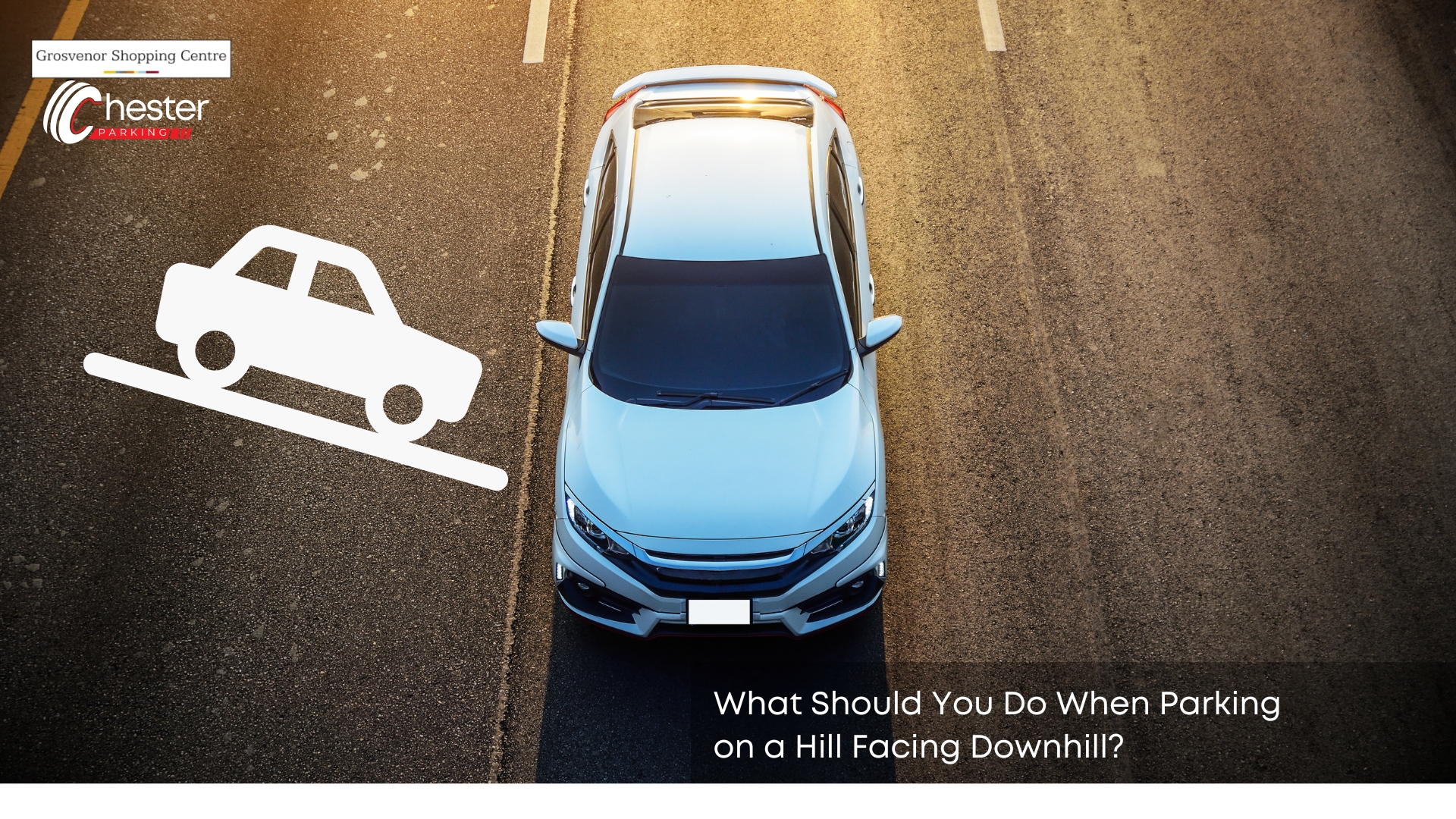Parking on a hill is not quite the same as parking on a flat road. If you are facing downhill and do not take the right steps, your car could move unexpectedly, causing damage or injury. Whether you drive a manual or automatic vehicle, it’s essential to park safely to protect your vehicle and those nearby. In this guide, we explain what to do when parking on a downhill slope and how to avoid common mistakes.
Why Is Parking on a Hill Different from Flat Ground?
Parking on a hill is different because gravity can pull your car forward or backward if it’s not secured properly. Even if your handbrake is on, the slope creates pressure on the wheels and brake system. On flat ground, you can usually rely on just the brake, but on a slope, more care is needed. That’s why it’s essential to take the right steps from the moment you stop.
What’s the First Step When Parking on a Downhill Slope?
The first thing to do is slow down and stop your vehicle as close to the curb as possible. Make sure you are fully in control and not rushing the process. Keep your foot on the brake while you prepare the car. Staying calm and steady will help you park with confidence. Once stopped, the next step is how you position your wheels.
Should You Turn Your Wheels When Facing Downhill?
Yes, always turn your front wheels towards the curb when facing downhill. This way, if the brakes fail, the wheels will roll into the curb rather than out into traffic. It acts as a safety block, reducing the chance of the car moving forward. This small move is one of the most effective ways to prevent an accident. Wheel direction matters just as much as braking.
Which Gear Should You Leave the Car In When Parked?
If you drive a manual car, leave it in reverse when facing downhill. This adds another layer of protection by keeping the engine engaged. In automatic cars, place the gear in ‘Park’ mode. These steps reduce the risk of the car rolling even if the brake slips. Pairing gear selection with wheel positioning gives better peace of mind.
Do You Still Need to Use the Handbrake?
Yes, the handbrake (or parking brake) should always be applied. It holds the car firmly in place and is especially important on a slope. Make sure you pull it up fully until it clicks into position. For cars with an electric parking brake, check the dashboard to confirm it’s active. Using the brake properly is still not the only method to stay safe.
Can the Kerb Help Stop the Car from Rolling?
Yes, the curb acts as a physical stop if your car starts to roll. By turning your wheels into the kerb, you let the tyre rest against it if the vehicle moves. This technique is simple but highly effective. It’s especially helpful in cities or areas with older cars. But not all roads have this feature to rely on.
What If There Is No Kerb Where You Park?
If there is no kerb, turn your wheels so the car will roll away from traffic if the brakes fail. For downhill parking, that still means turning the wheels toward the roadside verge or fence. Without a curb, the best you can do is use the environment to reduce risks. Always combine this with the handbrake and correct gear.
Is It Safe to Rely on the Parking Brake Alone?
No, you should not rely on only the parking brake. While strong, it can fail over time or loosen if not maintained. Temperature changes, wear and tear, or human error can all weaken its grip. Using multiple methods gives better protection. A good routine will include brake, gear, and wheel position together.
What Should You Check Before Leaving the Vehicle?
Before walking away, make sure your wheels are turned correctly, your gear is set, and the handbrake is fully engaged. If your car has an electronic brake, wait for the signal or light. You can also check if the car gently rests into the wheel position by lifting your foot off the brake for a second. This extra moment helps avoid problems later, especially in busy spots like Parking Chester.
Are Automatic and Manual Cars Parked Differently on Hills?
Yes, they require slightly different actions. In a manual, use reverse gear for downhill and first gear for uphill parking. In an automatic, use the ‘Park’ setting for all slopes. Regardless of transmission, the handbrake and wheel direction stays the same. These combined steps are what make the difference.
What Happens If You Skip These Steps?
If you skip key steps, such as turning the wheels or setting the brake, your car could roll into traffic or cause damage. This can result in fines, insurance claims, or worse – injury. Many hill-related incidents happen due to simple mistakes. Safe locations such as all-day parking zones reduce this risk by offering level surfaces and secure spots.
How Can You Practise Parking on a Slope Safely?
You can practise hill parking in a quiet area or with a driving instructor. Look for a gentle slope first before trying steeper roads. Take time to position your wheels, apply the brake, and check your gear. Repeat the process until it becomes second nature. If you’re parking in less familiar areas like a camping car park, this habit is even more important.
The Best Way to Remember These Hill Parking Tips
A good way to remember is the simple rule: brake, gear, steer. Use the handbrake, leave the car in the correct gear, and turn your wheels into the curb. Repeat this routine each time you park on a slope. Like checking your mirrors, it should become a natural part of your driving. Taking a few seconds now can prevent big problems later.


Leave a Reply